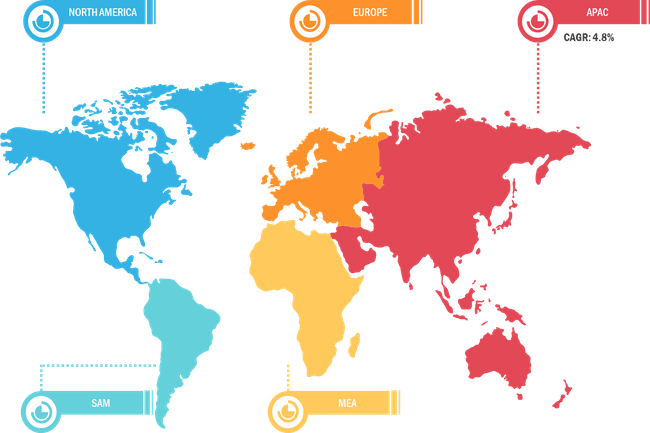Growing Demand for Polyisobutylene from Construction Industry
According to our latest market study on “Polyisobutylene Market Forecast to 2028 – COVID-19 Impact and Global Analysis – by Molecular Weight (Low, Medium, and High), Product (Conventional PIB and Highly Reactive PIB), Application (Tires, Industrial Lubes and Lube Additives, Fuel Additives, Adhesives and Sealants, and Others), and End-Use Industry (Industrial, Food, and Others),” the polyisobutylene market was valued at US$ 2,871.14 million in 2021 and is projected to reach US$ 3,891.16 million by 2028; it is expected to grow at a CAGR of 4.4% from 2021 to 2028. The report highlights key factors driving the polyisobutylene market growth, and prominent players along with their developments in the market.
Polyisobutylene with medium molecular weight is employed as tack improver in adhesive formulations, viscosity modifier, and primary binder in caulking and sealing compounds. It is also utilized in fuel and lubricating oil additives. Polyisobutylene is further extensively utilized as a protective barrier in the adhesive industry. Furthermore, countries such as Japan, China, India, and South Korea are witnessing significant industrialization, which has led to considerable demand for polyisobutylene in the Asia Pacific. The presence of renowned tire and tube manufacturing companies in China, India, Indonesia and Malaysia is a major factor contributing the regional business growth. Increasing automotive sales in India and China, mainly due to increasing per capita disposable income of consumer along with reduced interest rates on car loans, is expected to complement the polyisobutylene market growth during the forecast period.
There are rapid changes in the construction industry associated with the use of this material. Urbanization is considered as one of the international megatrends driving the construction industry. The population of the global urban zones is rising by 200,000 people per day, all of whom need reasonably priced housing, transportation, and social and utility infrastructure. In such challenges, the construction industry is practically under a moral compulsion to transform. The utilization of polyisobutylene is increasing across the construction industry due to rising demand for material with high melt flow rates, greater elongation, and enhanced impact strength. These factors are expected to aid the global polyisobutylene market growth.
BASF SE, Braskem S.A., Daelim Industrial Petrochemical Division, Ineos AG, Infineum International Limited., Kothari Petrochemicals., Sibur Holding PJSC, Kemat Polybutenes, The Lubrizol Corporation, and TPC Group are among the key players operating in the global polyisobutylene market.
Impact of COVID-19 Pandemic on Polyisobutylene Market
The COVID-19 pandemic drastically altered the status of the chemicals & materials sector and negatively impacted the polyisobutylene market growth. The implementation of measures to combat the spread of the virus aggravated the situation and negatively impacted the growth of several industrial sectors, which negatively impacted the demand for polyisobutylene in the global market. In Europe, Italy and Spain are the hardest-hit countries by the COVID-19 outbreak. Italy recorded the highest number of COVID-19 cases. Thus, it is expected to suffer an economic hit due to a lack of revenue from various industries. The lockdown of various plants and factories worldwide restricted the supply chains and negatively impacted the manufacturing activities, delivery schedules, and sales of various end-use industries. However, as the economies are planning to revive their operations, the demand for polyisobutylene is expected to rise globally. The demand for polyisobutylene from the downstream industrial lubes and lube additives sectors has started increasing with the resumption of business activities and the lifting of lockdown measures globally. Therefore, these factors are expected to aid the recovery, thereby aiding the expansion of the global polyisobutylene market size.
Global Polyisobutylene Market Breakdown – by Region
Polyisobutylene Market Forecast to 2028 - COVID-19 Impact and Global Analysis By Molecular Weight (Low, Medium, and High), Product (Conventional PIB and Highly Reactive PIB), Application (Tires, Industrial Lubes and Lube Additives, Fuel Additives, Adhesives and Sealants, and Others), and End-Use Industry (Industrial, Food, and Others)
Polyisobutylene Market Strategies by 2028
Download Free Sample
The report includes the segmentation of the global polyisobutylene market as follows:
Based on molecular weight, the global polyisobutylene market is segmented into low, medium, and high. Based on product, the market is bifurcated into conventional PIB and highly reactive PIB. Based on application, the polyisobutylene market is segmented into tires, industrial lubes and lube additives, fuel additives, adhesives and sealants, and others. Based on end-use industry, the market is segmented into industrial, food, and others. By geography, the polyisobutylene market is broadly segmented into North America, Europe, Asia Pacific (APAC), the Middle East & Africa (MEA), and South and Central America. The market in North America is further segmented into the US, Canada, and Mexico. The European market is subsegmented into Germany, France, the UK, Italy, Russia, and the Rest of Europe. The Asia Pacific polyisobutylene market is further segmented into China, India, Japan, Australia, South Korea, and the Rest of Asia Pacific. The market in Middle East & Africa (MEA) is further segmented into South Africa, Saudi Arabia, the UAE, and the Rest of MEA. The South and Central America polyisobutylene market is further segmented into Brazil, Argentina, and the Rest of South and Central America.
Contact Us
Phone: +1-646-491-9876
Email Id: sales@theinsightpartners.com